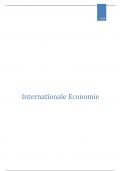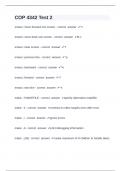College aantekeningen
Detailed lecture notes Culture & Language: Europe
- Instelling
- Universiteit Leiden (UL)
This document contains extensive lecture notes for the course Culture & Language: Europe, covering the lectures from the block 2 (7-12). Please note that these notes are not a substitute for the lecture readings - for the readings, they only cover the most important points mentioned by the lecturer...
[Meer zien]













